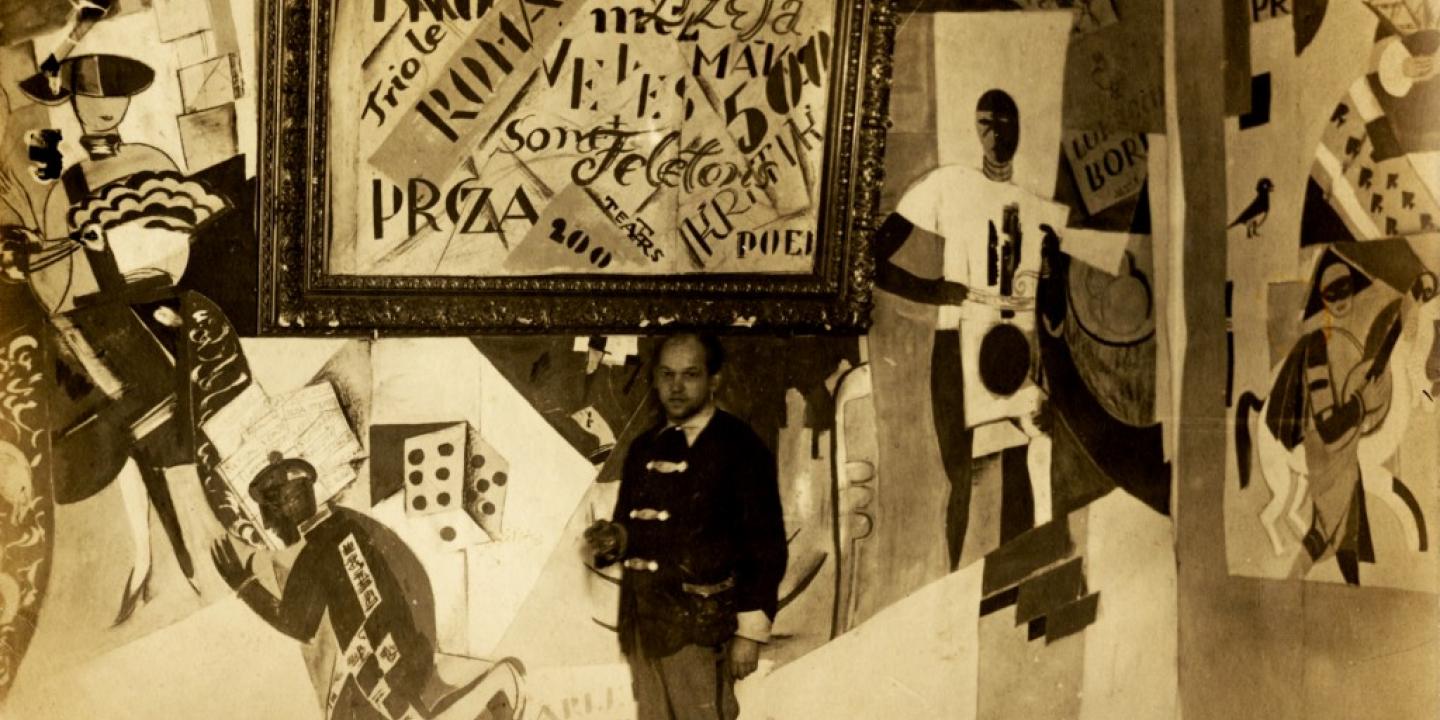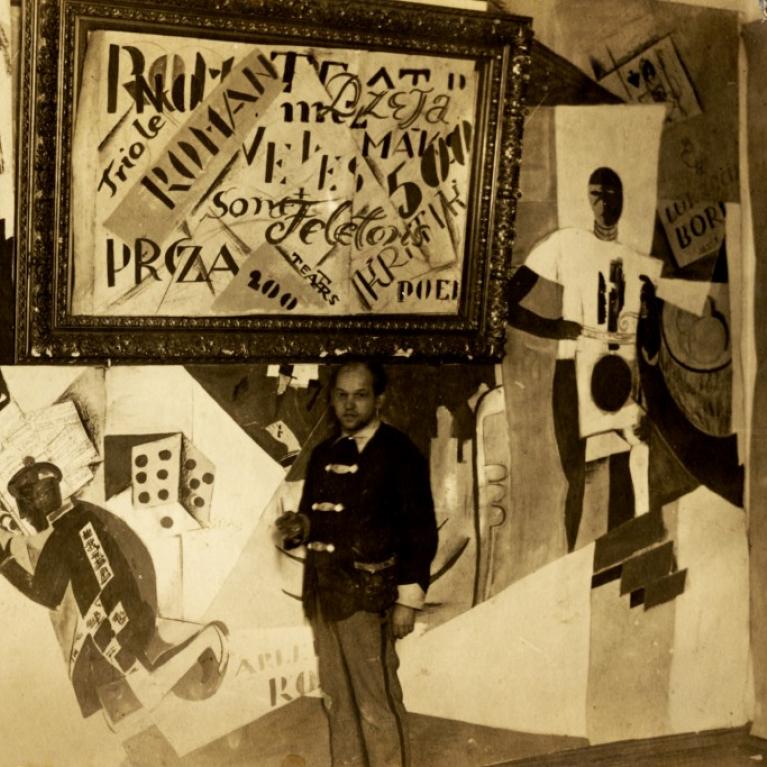Views from Celebrations Gone By. Press Balls in Riga in the 1920s and 1930s
From 13 December 2016 to 18 March 2017, the exhibition “Views from Celebrations Gone By” will be on show in the Romans Suta and Aleksandra Beļcova Museum in Riga (57a Elizabetes Street, Apt. 26) telling a wonderful story about legendary Press Balls which were held in Riga in the 1920s and 1930s.
The first Press Ball was organised in February 1922 in honour of the centenary of the printed press in Latvia, and the balls became a regularly scheduled event, always being organised in Riga or elsewhere in Latvia in February or December. They continued until 1939, when the last ball was held. Many Latvian communities preserved the traditions in emigration. The galas gathered together not just journalists and other employees of periodicals, for whom entrance into the ball was at no charge, but also celebrities, civil servants and members of the creative intelligentsia, all of whom purchased tickets.
The rooms were always designed by a well-known artist such as Konrāds Ubāns (1922), Valdemārs Tone (1922), Oto Skulme (1922, 1931), Jānis Liepiņš (1923), Ludolfs Liberts (1923–1926, 1931, 1937), Hermanis Grīnbergs (1928), Niklāvs Strunke (1928, 1930, 1931), Herberts Līkums (1930, 1931, 1934), Aleksandrs Krūka (1935–1936), Jānis Kuga (1928, 1929, 1937), Vilis Vasariņš (1937) and Pēteris Rožlapa (1938). Romans Suta (1896–1944) designed the ball in 1927 and 1933, and the decorations in 1927 were certainly more brilliant and impressive. Photographs of the ball have been preserved, and here is a review in the press that describes the atmosphere of the event:
“The annual Press Ball is now over, as is the dizzying merriment, the sounds that led to dance, the booming radio speakers, the lotteries and the soothsayer’s booths. Who can remember all of the details? A few scenes, however, are still before my eyes. An ‘honour guard’ of journalists welcomed guests at the entrance hall. There were few people until 10:00 PM, when a flood of guests began to arrive. This was a hurried situation. The hour of the polonaise was approaching, and no one wanted to miss it. Suddenly, the radio started to boom with a prologue from Jānis Akuraters, followed by a song of greetings sung by the double quartet men’s choir Latvija. Then a magical word led everyone to stand in line for the polonaise, and the orchestra from the Valmiera regimental band did its job – maintaining the rhythm of the dancers. An endless line of couples wove through the rooms.
Only then could I start to look at the lovely decorations that were the work of the gifted artist Romans Suta. All of our press is represented in texts in the dance hall, with Latvijas Kareivis finding its place right above the entrance door. Such a colourful place! A radio tower in the middle of the hall. The orchestra almost covered up, with only the conductor, Orēza, occasionally seen. Much activity in the room with little tables. This room is decorated to the best degree with stylised aspects of the lives of ancient Latvians, with lots of red and white colours. I see representatives of our government here. Prime Minister Marģers Skujenieks is smiling cosily at one of the tables. The director of the National Theatre, Artūrs Bērziņš, is talking very seriously with Finance Minister Voldemārs Bastjānis, perhaps about budget issues. [..]
The same observation post is held by the people’s welfare minister, Ansis Rudevics, who seems to be quite satisfied with this manifestation of welfare. People are dancing and dancing. Representatives of the diplomatic corps are here. The law to combat alcohol has destroyed press saloons, but people did not particularly miss them. [..] Big things have happened. Mrs Grebzde, a dance teacher, has won a bicycle in the lottery, while the director of the National Opera, Jānis Zālītis, won a big piece of dried meat. The lucky winners and the audience seemed to be satisfied. The celebration lasted until late in the morning, when the guests wandered home down the foggy streets. The press calendar tells us that spring will arrive soon. Fine! People await it most eagerly in the wake of the Press Ball.” *
As soon as the Press Ball was over, preparations for the next one began. An organising committee was elected, and periodicals regularly reported on lists of companies and manufacturers from which gifts for the lottery had been donated. Some of the donations were anonymous and came from ‘quiet fans of the press.’ Lottery prizes included a plot of land with a small house, foreign trips, gold jewellery, a VEF radio set, books, theatre subscriptions, sweets, wine, purses, perfume, cosmetics, table lamps, cameras, cigarettes, sound recordings, subscriptions to magazines, paints for artists, skis, skates, a little dog, dishes, noodles and even a small pot of herring. Suta won an ancient silver tea service from the Rozentāls Antiques Shop in 1927.
Ladies prepared for the Press Ball most carefully. The press always focused on their apparel, and there was no forgiveness for those who dared turn up in last year’s dress. Aleksandra Beļcova (1892–1981) designed her own dress for the 1927 ball, and it was sewn from silver textile with a bare back (very fashionable at that time). Her short-cut hairdo supplemented the image. We don’t know which lady was chosen as the press queen at the 1927 ball (that was a tradition every year), but Beļcova certainly could have been one of the candidates. Another was the great Latvian opera diva Milda Brehmane-Štengele. The galas were always the focus of much attention. This exhibition includes the dress which Brehmane-Štengele wore at the Press Ball in 1928. It was sewn in Riga from textiles that were manufactured in Latvia.
The exhibition offers a look at a brilliant page in the history of Latvian culture, focusing on life in Latvia in the 1920s and 1930s. That life created the backdrop for masterpieces of Modernist art in Latvia. Objects and materials come from the Romans Suta and Aleksandra Beļcova Museum, the Museum of Literature and Music, Museum of the History of Riga and Navigation, and the collection of fashion historian Alexandre Vassiliev (the dress and accessories from the 1920s).
EXHIBITION CURATOR:
Dr. art. Natalya Yevseyeva, Museum of Romans Suta and Aleksandra Belcova / Latvian National Museum of Art

